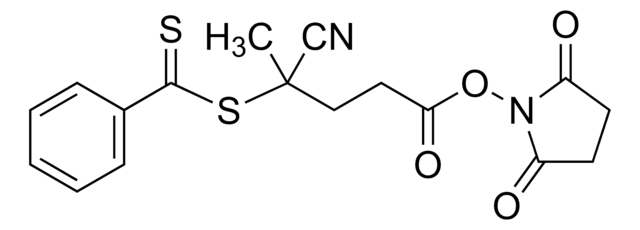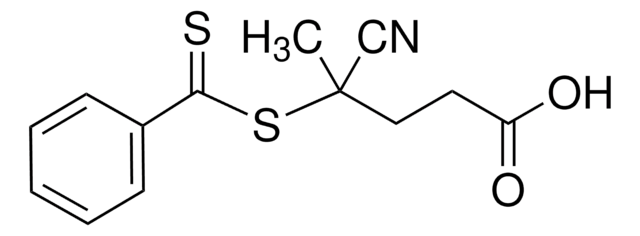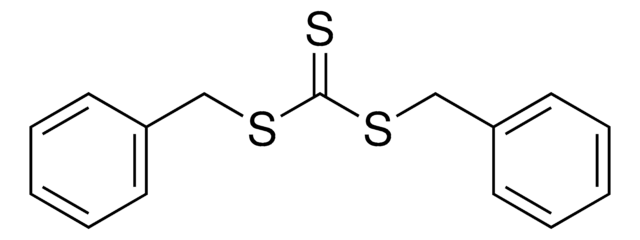About This Item
推荐产品
品質等級
化驗
98% (HPLC)
形狀
solid
mp
96-102 °C
儲存溫度
2-8°C
SMILES 字串
CCCCCCCCCCCCSC(=S)SC(C)(C)C(=O)ON1C(=O)CCC1=O
InChI
1S/C21H35NO4S3/c1-4-5-6-7-8-9-10-11-12-13-16-28-20(27)29-21(2,3)19(25)26-22-17(23)14-15-18(22)24/h4-16H2,1-3H3
InChI 密鑰
HKWLQDYVQCZTQP-UHFFFAOYSA-N
一般說明
應用
訊號詞
Warning
危險聲明
危險分類
Eye Irrit. 2 - Skin Irrit. 2 - STOT SE 3
標靶器官
Respiratory system
儲存類別代碼
11 - Combustible Solids
水污染物質分類(WGK)
WGK 3
閃點(°F)
Not applicable
閃點(°C)
Not applicable
商品
Over the past two decades, the rapid advance of controlled living polymerization (CLP) techniques.
The modification of biomacromolecules, such as peptides and proteins, through the attachment of synthetic polymers has led to a new family of highly advanced biomaterials with enhanced properties.
We presents an article about a micro review of reversible addition/fragmentation chain transfer (RAFT) polymerization. RAFT (Reversible Addition/Fragmentation Chain Transfer) polymerization is a reversible deactivation radical polymerization (RDRP) and one of the more versatile methods for providing living characteristics to radical polymerization.
Applying ARGET ATRP to the Growth of Polymer Brush Thin Films by Surface-initiated Polymerization
实验方案
Sigma-Aldrich presents an article about RAFT, or Reversible Addition/Fragmentation Chain Transfer, which is a form of living radical polymerization.
We presents an article featuring procedures that describe polymerization of methyl methacrylate and vinyl acetate homopolymers and a block copolymer as performed by researchers at CSIRO.
Sigma-Aldrich presents an article about the typical procedures for polymerizing via ATRP, which demonstrates that in the following two procedures describe two ATRP polymerization reactions as performed by Prof. Dave Hadddleton′s research group at the University of Warwick.
我们的科学家团队拥有各种研究领域经验,包括生命科学、材料科学、化学合成、色谱、分析及许多其他领域.
联系技术服务部门
![4-氰基-4-[(十二烷基硫烷基硫羰基)硫烷基]戊酸 97% (HPLC)](/deepweb/assets/sigmaaldrich/product/structures/204/925/30ae6ca0-5b0b-4963-a061-7e5e3d1a85af/640/30ae6ca0-5b0b-4963-a061-7e5e3d1a85af.png)





![4-氰基-4-[(十二烷基磺胺基硫代羰基)磺胺基]戊醇](/deepweb/assets/sigmaaldrich/product/structures/839/520/64c23004-f340-460f-a379-8670a35d0433/640/64c23004-f340-460f-a379-8670a35d0433.png)
![2-[[(十二烷基巯基)硫代甲基]硫代]-2-甲基苯甲酸甲酯 97% (HPLC)](/deepweb/assets/sigmaaldrich/product/structures/245/668/a8ee726b-c171-4095-b30b-e8b726901ddd/640/a8ee726b-c171-4095-b30b-e8b726901ddd.png)

